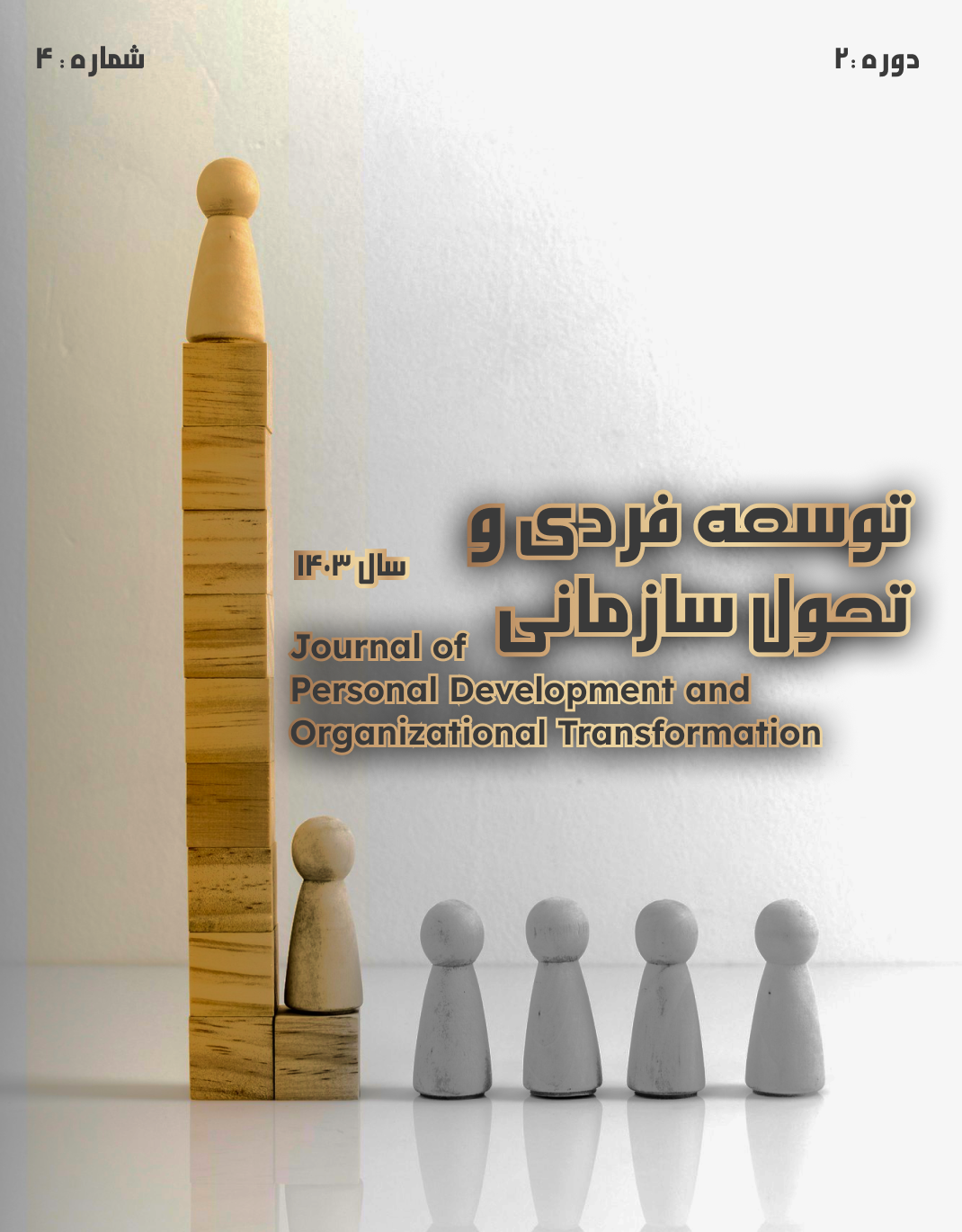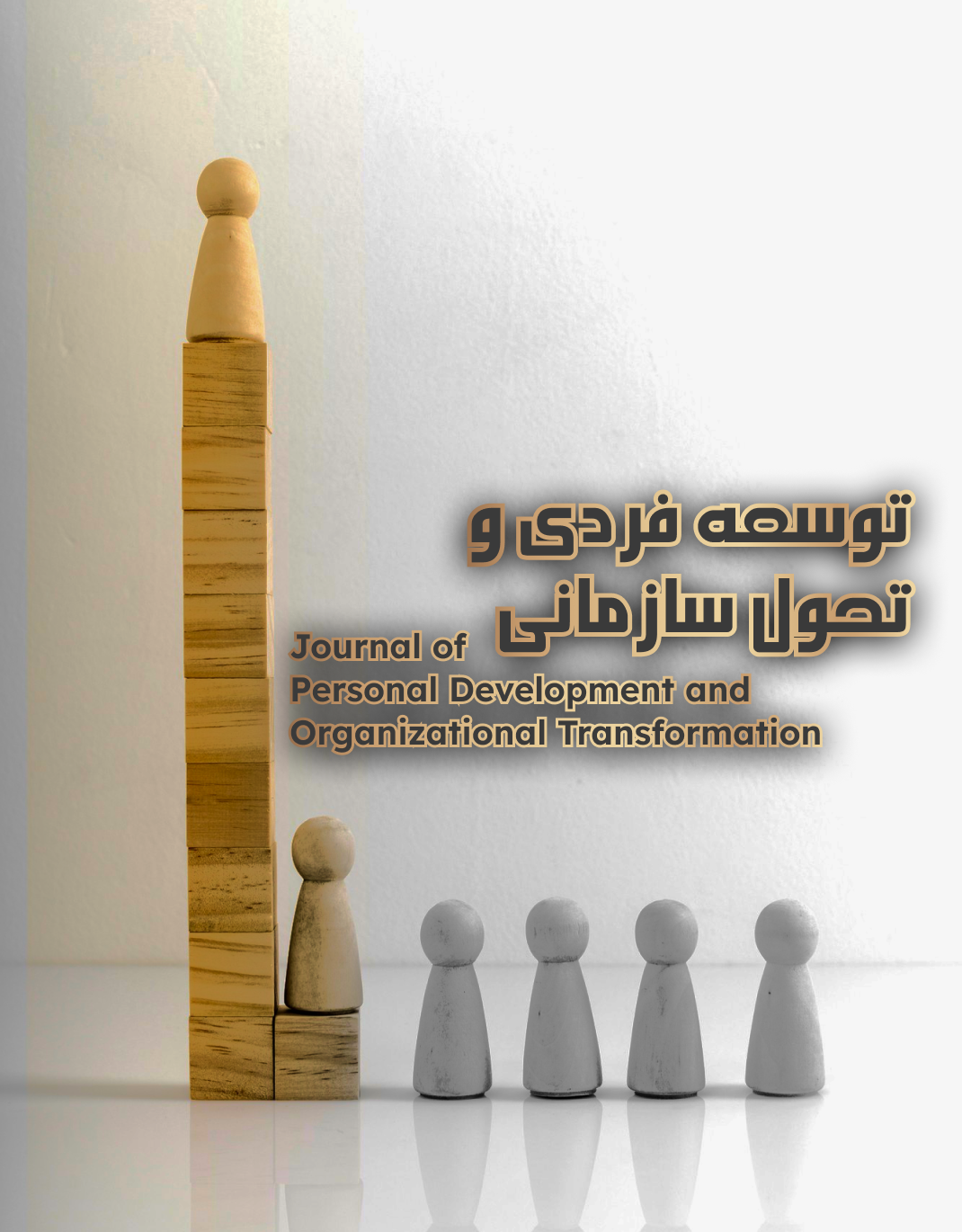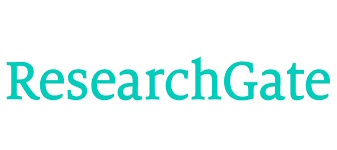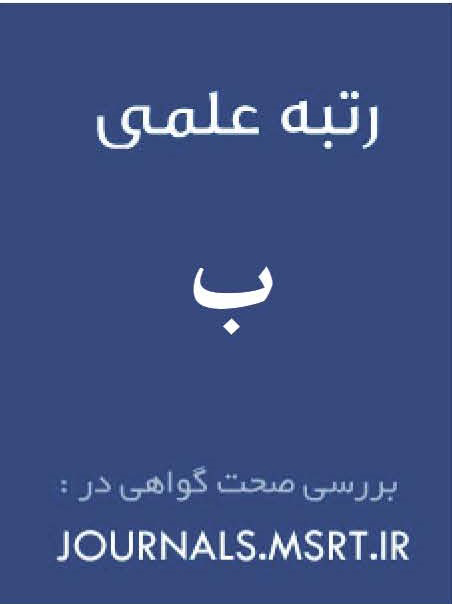Designing a Structural Model of Value Co-Creation with a Human Resource Approach in Medical Sciences Universities
Keywords:
Value Co-Creation, Medical Sciences University, Human Resources ApproachAbstract
This study aims to design a value co-creation model based on human resource perspectives within the medical sciences universities of northern Iran. The research is applied in terms of objective and follows a mixed-methods approach (qualitative and quantitative) for data collection. The qualitative phase employed grounded theory using the systematic approach of Strauss and Corbin (1998), while the quantitative phase utilized structural equation modeling (SEM). In the initial phase, concepts were extracted through a review of theoretical foundations, prior research, and semi-structured interviews. The qualitative participants included experts in organizational and human resource fields of medical universities, as well as faculty members, selected through snowball sampling, totaling 36 individuals. Data were collected through in-depth interviews, with theoretical saturation achieved in the 28th interview. In the quantitative section, the statistical population included all managers, deputies, and employees of Guilan University of Medical Sciences, Mazandaran University of Medical Sciences, and Golestan University of Medical Sciences, amounting to 27,726 individuals. Using Cochran’s formula, a sample size of 379 was estimated. A stratified random sampling method was applied. Findings revealed that organizational structure and leadership, human resource development, communication and collaboration, responsiveness to labor market changes, development and innovation, ethics and social responsibility, financial management and resource allocation, and shared organizational culture are causal factors. Technical infrastructure, organizational policies and strategies, technology service management, sustainable financial management policies, philanthropic capacity in health promotion, shared workspace, and structured knowledge management were identified as the governing context. Political conditions, external stakeholder interventions, financial and resource constraints, inefficiency in enterprise resource planning (ERP) management, administrative system inefficiency, organizational counterproductive behaviors, and cultural diversity within universities were identified as intervening conditions. Strategic measures such as implementation of the university’s strategic transformation plan, assessment center diagnostics and HR development, modeling the role of knowledge-industry coordination centers in university-industry relations, allocation of resources and administrative support for joint projects, formulation and execution of HR capacity toward organizational mission achievement, strategic HRM goals and processes, and stakeholder engagement in university policymaking processes lead to individual, organizational, and societal outcomes. The model fit indices confirmed that all identified categories were supported in the confirmatory analysis, and the research model demonstrated a satisfactory fit.
Downloads
References
Adam, M. (2018). The Role of Human Resource Management (HRM) for the Implementation of Sustainable Product-Service Systems (PSS)-An Analysis of Fashion Retailers. Sustainability, 10, 2518. https://doi.org/10.3390/su10072518
Afiouni, F., Charlotte, M., & Karam, H. E.-H. (2013). The HR value proposition model in the Arab Middle East: identifying the contours of an Arab Middle Eastern HR model. The International Journal of Human Resource Management, 24(10), 1895-1932. https://doi.org/10.1080/09585192.2012.722559
Alcoba, J., Mostajo, S. T., Ebron, R. A., & Paras, R. (2017). Balancing Value Co-Creation: Culture, Ecology, and Human Resources in Tourism Industry. In S. Rozenes & Y. Cohen (Eds.), Handbook of Research on Strategic Alliances and Value Co-Creation in the Service Industry (pp. 285-304). IGI Global. https://doi.org/10.4018/978-1-5225-2084-9.ch014
Anwar, G., & Abdullah, N. N. (2021). The impact of Human resource management practice on Organizational performance. International journal of Engineering, Business and Management (IJEBM), 5. https://doi.org/10.22161/ijebm.5.1.4
Avery, D. R., & McKay, P. F. (2006). Target practice: An organizational impression management approach to attracting minority and female job applicants. Personnel psychology, 59, 157-187. https://doi.org/10.1111/j.1744-6570.2006.00807.x
Banmairuroy, W., Kritjaroen, T., & Homsombat, W. (2022). The effect of knowledge-oriented leadership and human resource development on sustainable competitive advantage through organizational innovation's component factors: Evidence from Thailand's new S-curve industries. Asia Pacific Management Review, 27(3), 200-209. https://doi.org/10.1016/j.apmrv.2021.09.001
Barile, S., Bassano, C., Piciocchi, P., Saviano, M., & Spohrer, J. C. (2021). Empowering value co-creation in the digital age. Journal of Business & Industrial Marketing. https://doi.org/10.1108/JBIM-12-2019-0553
Bednall, T. C., Sanders, K., & Runhaar, P. (2014). Stimulating informal learning activities through perceptions of performance appraisal quality and human resource management system strength: A two-wave study. Academy of Management Learning & Education, 13(1), 45-61. https://doi.org/10.5465/amle.2012.0162
Biron, M., De Cieri, H., Fulmer, I., Lin, C. H., Mayrhofer, W., Nyfoudi, M., & Sun, J. M. (2021). Structuring for innovative responses to human resource challenges: A skunk works approach. Human Resource Management Review, 31(2), 100768. https://doi.org/10.1016/j.hrmr.2020.100768
Boadi, E. A., He, Z., Antwi, C. O., Altab, H. M., Bosompem, J., Hinson, R. E., & Boadi, V. A. (2022). Value co-creation and employee service behaviours: The moderating role of trust in employee-hotel relationship. Journal of Retailing and Consumer Services, 66, 102898. https://doi.org/10.1016/j.jretconser.2021.102898
Bos‐Nehles, A. C., Van Riemsdijk, M. J., & Kees Looise, J. (2013). Employee perceptions of line management performance: applying the AMO theory to explain the effectiveness of line managers' HRM implementation. Human Resource Management, 52(6), 861-877. https://doi.org/10.1002/hrm.21578
Butts, M. M., Casper, W. J., & Yang, T. S. (2013). How important are work-family support policies? A meta-analytic investigation of their effects on employee outcomes. Journal of Applied Psychology, 98(1), 1-25. https://doi.org/10.1037/a0030389
Caputo, F., Garcia-Perez, A., Cillo, V., & Giacosa, E. (2019). A knowledge-based view of people and technology: directions for a value co-creation-based learning organisation. Journal of Knowledge Management, 23(7), 1314-1334. https://doi.org/10.1108/JKM-10-2018-0645
Chakraborty, D., & Biswas, W. (2019). Evaluating the impact of human resource planning programs in addressing the strategic goal of the firm: An organizational perspective. Journal of Advances in Management Research, 16(5), 659-682. https://doi.org/10.1108/JAMR-01-2019-0007
Chiang, C., & Wu, K. (2014). The influences of internal service quality and job standardization on job satisfaction with supports as mediators: Flight attendants at branch workplace. International Journal of Human Resource Management, 25(19), 2644-2666. https://doi.org/10.1080/09585192.2014.884616
Christensen, J. F., Guschke, B. L., Storm, K. I. L., & Muhr, S. L. (2022). The norm of norms in HRM research: A review and suggestions for future studies. Human Resource Management Review, 32(4), 100859. https://doi.org/10.1016/j.hrmr.2021.100859
Collins, C. J. (2021). Expanding the resource based view model of strategic human resource management. The International Journal of Human Resource Management, 32(2), 331-358. https://doi.org/10.1080/09585192.2019.1711442
Crossgrove, J., Scheer, S. D., Conklin, N. L., Jones, J. M., & Safrit, R. D. (2005). Organizational Values Perceived as Evident Among Ohio State University Extension Personnel. Extension Journal, 43(5). https://archives.joe.org/joe/2005october/rb6.php
Ghorbanzadeh, D., & Sharbatiyan, M. (2024). The role of website features in creating value co-creation behaviors and enhancing the brand image and reputation of higher education institutions. Interactive Technology and Smart Education, 21(1), 21-43. https://doi.org/10.1108/ITSE-12-2021-0225
Jain, S., Sharma, K., & Devi, S. (2024). The dynamics of value co-creation behavior: A systematic review and future research agenda. International Journal of Consumer Studies, 48(1), e12993. https://doi.org/10.1111/ijcs.12993
Lu, X., Ren, F. T., Wang, X., & Meng, H. (2024). How Gamified Interactions Drive Users’ Green Value Co-Creation Behaviors: An Empirical Study From China. Sustainability, 16(9), 3512. https://doi.org/10.3390/su16093512
Narot, P. (2024). Value Co-Creation: A Strategy for Enhancing Inclusiveness in Special Education. Education Sciences, 14(2), 208. https://doi.org/10.3390/educsci14020208
Downloads
Published
Submitted
Revised
Accepted
Issue
Section
License
Copyright (c) 2025 موسی الرضا زنگانه (نویسنده); محمودرضا مستقیمی ; علیرضا مزیدی (نویسنده)

This work is licensed under a Creative Commons Attribution-NonCommercial 4.0 International License.







